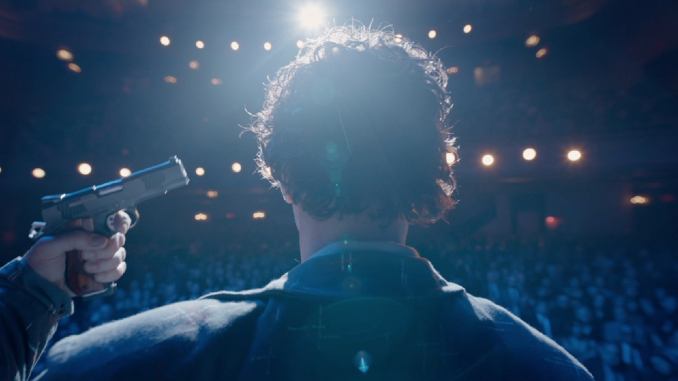Does Hollywood Think Theater Is Tragic or Comic?

When I think of TV and movies about theater, the two pop culture references I immediately reach for are Joey in the early seasons of Friends, dragging his friends along to another abysmal play in a dingy theater, and Ed Wood’s amateur L.A. theater troupe, huddled around the first print of their reviews, their director encouraging them to not be too dismayed at the poor reception. These are easy touchstones, but they feel doubly resonant with my own experiences of low-rent theater. I have had to deal with lukewarm reviews (jokes on you, student newspaper journalists, now I’m the critic), and I have worked really hard on crappy theater that my friends felt obligated to attend.
I’m sure a lot of people in front of and behind the camera had their own experiences making shoddy art, so I’m sure both these mockeries were in good faith, but such on-screen mockery is not limited to when theater is unwatchable. Expensive, glamorous, prestigious productions, from Broadway to West End, are, according to film, filled to the brim with divas, infighting, amorous trysts and betrayals. See How They Run continues the trend, but unlike the range of classic films that came before, shows a clear lack of interest in the relationship between the two storytelling mediums-despite centering on an attempted film adaptation of the London West End hit whodunnit The Mousetrap (now in its 70th year onstage!). “Isn’t all this fun?” it says with its fizzy aesthetics, its theater setting largely relegated to a backdrop. But theater is a lot more than a backdrop. It doesn’t matter if it does so in bad faith, with biting cynicism, or melodramatic characters—the camera can offer a perfect vantage point from which to interrogate the stage.
As a creative and critical writer for both mediums, I’ve noticed a range of the fixations film has developed with its artistic double. Is a theater troupe more intimate or insular than a film cast and crew? Do you have more opportunity for experimentation, as opposed to the rigidly organized filmmaking process? And what do artists think of their audience when they’re tangibly aware of their presence? See How They Run may not deign to answer these questions, but thankfully there’s decades worth of other films that have a crack at them.
The populist medium of film often sees theater culture as more elitist, resulting in a lot of comedic portraying plays and troupes as pretentious. Sure, a lot of theater is, but there’s nothing inherent to the artform that makes it more prone to pretension than film. What the majority of theater audiences will see every year is incredibly broadly pitched, and seeing as nobody ends up seeing the intentionally artsy, abstract stage work, it very much feels like we’re kicking it while it’s down. Two notable films about alternative, underground theater sidestep jabs at its inaccessibility, and avoid the low-hanging comedic fruit of “recreate terrible abstract theater that will never be as funny as the experience of watching sincere terrible abstract theater.”
Italian slasher Stage Fright, the best of the many horror films that have used the title, watches rehearsals for a funky musical get terrorized by a killer who adopts the identity of the fictional serial killer the musical is about: A man wearing an owl mask. (Remember: it’s abstract.) No salient points about the merits of theater as art are present here, rather it’s a physical space utilized commendably for murderous hijinks.
Contrastingly, Josephine Decker’s Madeline’s Madeline is concerned with the ethics of edgy theater, where an alternative theater troupe starts co-opting a young, mentally unwell actor’s traumatic personal life for their own artistic purposes. Decker’s thesis has little to do with the quality of the theater being created (it looks absolutely dreadful), and her narrative isn’t even restricted to criticizing theater. Without boundaries, the creative mindset these directors have will only lead to exploitation. It’s impossible to ignore the feeling of going too far with the drawing on of personal experiences, it’s just hard to vocalize your discomfort to a group of talented peers and authoritative artists that you idolize. Toxic power dynamics don’t just happen in the glamor of All About Eve—any creative process can be plagued with them.
Another trope films about theater love engaging with is The Audience, that vexing and nebulous mass that decides the merit of creative labors—or do they?! Sometimes audiences are nothing but dumb masses with broad tastes and simplistic understandings of art. In my experience, audiences are pretty discerning: I faced my most lukewarm audience at the end of a two-week festival run, where a couple hours earlier I had suffered a full-on mental breakdown, and the loudest laughs came exclusively from famed holographic doctor and Gremlin lover Robert Picardo. It was a surreal time.
-

-

-

-

-

-

-

-

-

-

-

-

-

-

-

-

-

-

-

-

-

-

-

-

-

-

-

-

-

-

-

-

-

-

-

-

-

-

-

-








































